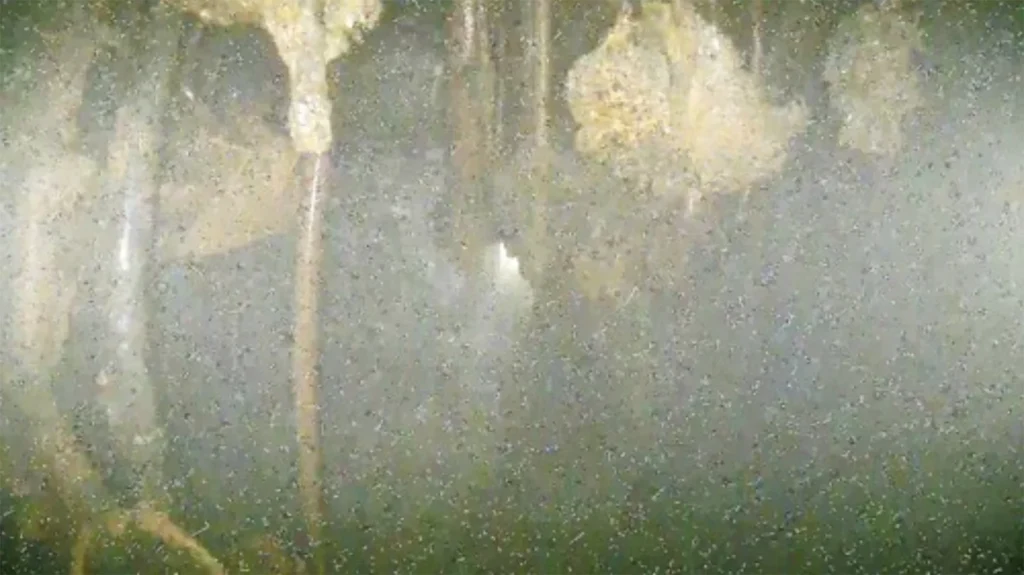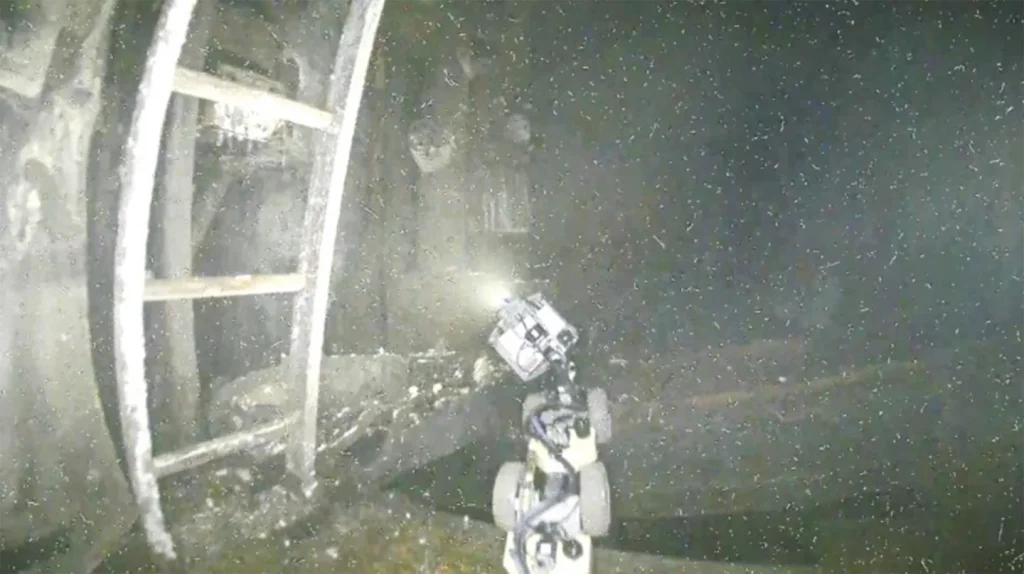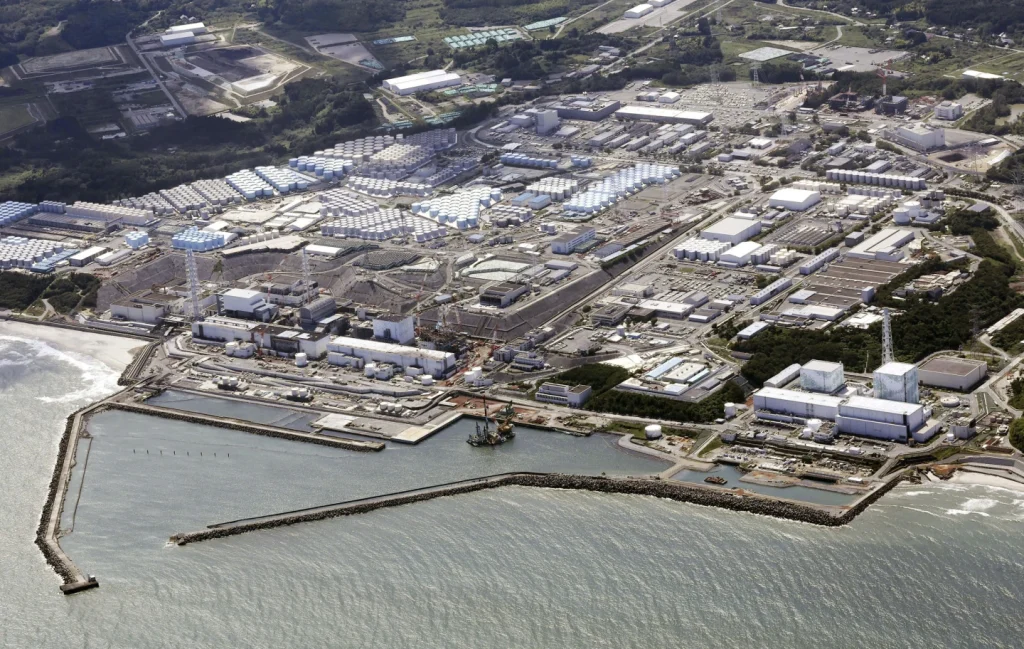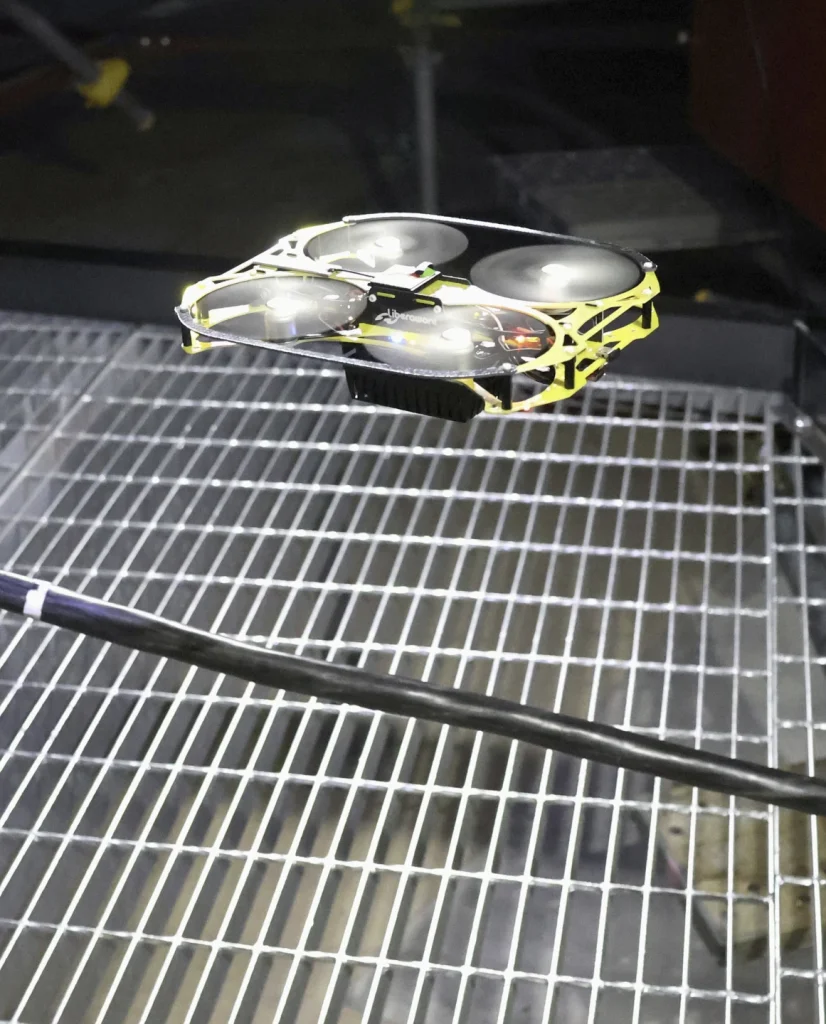The release of images taken by miniature drones from inside a badly damaged reactor at the Fukushima nuclear plant has shed light on the challenges faced in the decommissioning process.
These images, released by the plant’s operator, Tokyo Electric Power Company Holdings (TEPCO), provide a glimpse into the condition of the reactor’s primary containment vessel, specifically the pedestal area under the core of the No. 1 reactor.
The 12 photos captured by the drones mark a significant milestone in the ongoing efforts to assess the damage caused by the 2011 earthquake and tsunami that led to the meltdown of nuclear fuel at the plant.

Previous attempts to access this area using robots had proven unsuccessful, making this latest probe using miniature drones a crucial step in understanding the location and condition of the highly radioactive melted nuclear fuel that remains inside the reactor.
The images reveal displaced control equipment and misshapen materials within the pedestal, painting a vivid picture of the challenges faced by TEPCO in the decommissioning process.
Brown objects of various shapes and sizes can be seen dangling from different locations in the pedestal, indicating the extent of the damage caused by the meltdown.
Parts of the control-rod drive mechanism, crucial for controlling the nuclear chain reaction, were dislodged, further complicating the task of removing the melted nuclear fuel.
The significance of these images lies in the insights they provide into the current state of the reactor and the obstacles that must be overcome in the decommissioning process.
With approximately 880 tons of highly radioactive melted nuclear fuel still present in the three damaged reactors, understanding its location and condition is essential for the safe and effective removal of the fuel.
TEPCO’s efforts to utilize miniature drones for this probe highlight the innovative approaches being taken to address the challenges posed by the Fukushima nuclear disaster.
By leveraging advanced technology and expertise, TEPCO is working towards a comprehensive understanding of the situation inside the reactor, paving the way for the eventual decommissioning of the plant.

In conclusion, the images taken by miniature drones inside the damaged reactor at the Fukushima nuclear plant offer valuable insights into the complexities of the decommissioning process.
As efforts continue to assess and address the aftermath of the 2011 disaster, these images serve as a reminder of the ongoing challenges and the importance of continued vigilance in ensuring the safe and effective decommissioning of the plant.
The challenges faced by TEPCO officials in assessing the situation at the Fukushima Daiichi nuclear power plant are emblematic of the complex and arduous task of decommissioning a facility ravaged by a nuclear disaster.
The inability to definitively identify whether the observed dangling lumps are melted fuel or equipment underscores the inherent difficulties in navigating the treacherous terrain of a contaminated reactor core.
The reliance on additional data, such as radiation levels, to make informed assessments speaks to the intricate nature of the cleanup efforts.
The constraints imposed by the need for lightweight and maneuverable drones, which precluded the inclusion of dosimeters to measure radiation levels, highlight the trade-offs that must be made in the pursuit of gathering crucial information within hazardous environments.
The limitations of drone cameras in penetrating the darkness of the containment vessel, thereby obstructing a comprehensive view of the reactor core, further accentuate the formidable obstacles that impede a thorough understanding of the extent of the damage.
The significance of the data obtained from the probe cannot be overstated, as it serves as a linchpin for informing future investigations and guiding the development of technologies and robots essential for the removal of melted debris.
The vast expanse of unknowns surrounding the interior of the reactors underscores the magnitude of the challenge confronting cleanup efforts.
The skepticism expressed by critics regarding the ambitious 30-40 year timeline set for the plant’s cleanup underscores the skepticism surrounding the feasibility of such an optimistic target.
The protracted delays in the decommissioning process, stemming from technical hurdles and the dearth of essential data, underscore the formidable hurdles that must be overcome in the arduous journey towards restoring the Fukushima Daiichi nuclear power plant to a state of safety and stability.

The intricate interplay of technological limitations, logistical constraints, and environmental hazards underscores the multifaceted nature of the challenges facing TEPCO and the broader cleanup efforts.
In conclusion, the complexities inherent in the decommissioning process of the Fukushima Daiichi nuclear power plant serve as a stark reminder of the enduring legacy of nuclear disasters and the herculean efforts required to mitigate their far-reaching consequences.
The ongoing quest for solutions amidst a landscape fraught with uncertainties and obstacles underscores the imperative of sustained commitment, innovation, and collaboration in navigating the long and arduous road towards recovery and renewal.
